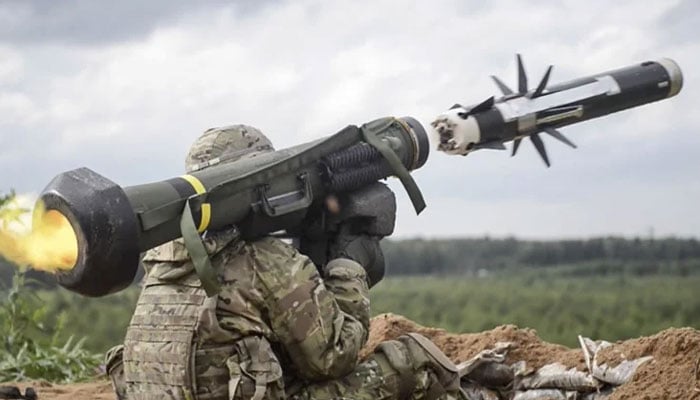TTP Acquires US-Made Anti-Tank Missiles, Raising Security Concerns in Pakistan
- Official says there’s no confirmed evidence of missiles in Pakistan.
- Official warns that terrorists can deploy Javelin missiles anywhere.
- Missiles can be used to target military posts and breach the border.
PESHAWAR: The Tehreek-e-Taliban Pakistan (TTP), a banned organization, has acquired United States-made anti-tank missiles, including the advanced FGM-148 Javelin, posing a significant security threat to Pakistan, according to a report by The News on Wednesday.
A video, released by a group associated with the TTP, depicts militants training with the Javelin missile, known for its “fire-and-forget” capabilities.
The Javelin’s advanced infrared guidance system enables it to automatically track and engage targets like tanks, armored vehicles, and fortified positions after launch. This allows the operator to quickly retreat to safety.
According to a security official who spoke with The News, there is no confirmed evidence indicating the presence of these missiles within Pakistan.
The primary concern is the terrorists’ newfound capability, which could be deployed anywhere in Pakistan.
The official emphasized that this situation highlights the Afghan government’s failure to secure abandoned US Army weapons and raises concerns that these missiles could target Pakistani military posts and compromise the Pakistan-Afghanistan border fence.
The FGM-148 Javelin, manufactured in the US at an estimated cost of $200,000 per unit, is specifically designed to destroy enemy tanks, armored vehicles, and fortified structures.
The “fire and forget” feature allows the missile to autonomously lock onto its target using an advanced infrared guidance system once launched. This allows the operator to move to a secure location after firing, reducing risk on the battlefield.
Security sources indicate that the possession and potential use of such advanced weaponry by TTP-affiliated groups significantly increases the threat level in the region.
Experts caution that the introduction of these missiles into militant arsenals could escalate violence in Pakistan.
This revelation follows Foreign Minister Ishaq Dar’s telephonic conversation with US Secretary of State Marco Rubio on Monday, where they discussed the issue of military equipment left behind in Afghanistan after the US withdrawal.
Pakistan experienced a sharp 42% increase in terror attacks in January 2025 compared to the previous month, according to the Pakistan Institute for Conflict and Security Studies (PICSS).
The Global Terrorism Index 2025 report also highlighted a significant increase in terrorism in Pakistan coinciding with the rise of the Afghan Taliban in Kabul.
The report noted that militant groups operating from Afghanistan have intensified attacks, particularly along the Pakistan-Afghanistan border, and identified the TTP as the deadliest terrorist group in the country, responsible for 52% of all terrorism-related deaths.
In 2024, the TTP carried out 482 attacks, resulting in 558 deaths. The number of attacks by these groups doubled in the previous year, with a corresponding 90% increase in fatalities.
A 2022 US Department of Defence report revealed that the US left behind $7 billion worth of military equipment in Afghanistan, which was quickly seized by Afghan Taliban fighters.
US forces attempted to dismantle or destroy as much machinery as possible during their withdrawal. However, substantial amounts fell into the hands of the Afghan Taliban in August 2021.
The Taliban reportedly refused to return any military equipment and requested more advanced weapons from the US to combat Daesh.
The issue of weapons proliferation was recently corroborated by a report from the Small Arms Survey, a Geneva-based organization.
The report, titled “Documenting Arms Availability in Afghanistan,” highlights ongoing arms trafficking in the region, noting that both Soviet-era and NATO-pattern weapons remain accessible despite the Taliban’s efforts to control arms distribution.
Field investigations conducted between 2022 and 2024 focused on arms availability, prices, and trafficking dynamics in Afghanistan’s eastern provinces.
These weapons are frequently diverted to non-state armed groups, including the Tehreek-e-Taliban Pakistan (TTP) and al-Qaeda, raising concerns about regional security.
According to the report, the availability of small arms, light weapons, and ammunition in the border regions has significantly changed since the Taliban’s takeover in 2021.
The report also found that NATO-pattern weapons, such as M4 and M16 rifles, have seen a substantial price increase, with M4s rising by 13% and M16s by 38% in Afghanistan’s Nangarhar and Kunar provinces.




Comments (0)
No comments yet. Be the first to comment!
Leave a Comment